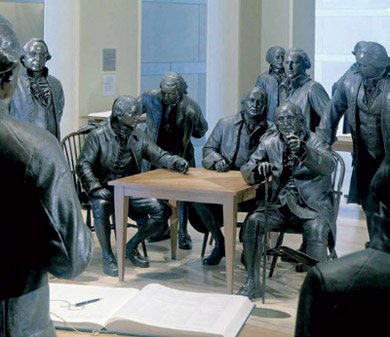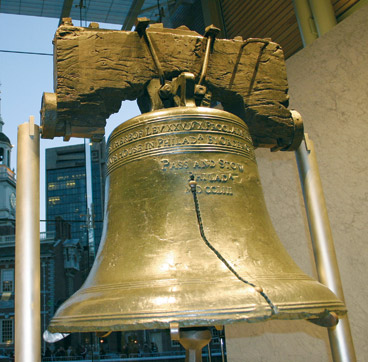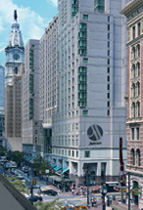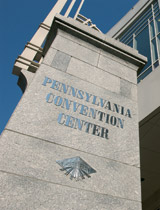The United States of America is a federal republic on the continent of North America, consisting of 48 contiguous states and the noncontiguous states of Alaska and Hawaii. It has an area of 9,826,630 sq km and is the third largest country in the world after Russia and Canada. The estimated U.S. population for the year 2008 is 303,824,650, third in the world behind China and India.
In addition to the contiguous and noncontiguous states, the United States includes a number of outlying areas, such as the Commonwealth of Puerto Rico and the Virgin Islands of the United States, which are located on the Caribbean Sea, and the islands of American Samoa and Guam, located in the Pacific Ocean. The national capital is Washington, D.C. (District of Columbia), located along the banks of the Potomac River between the states of Maryland and Virginia.
Each state is subdivided into counties, with the exception of Louisiana, where comparable political units are called parishes. Within these counties and parishes, there are communities that range in size from small villages to towns to cities. Extensive areas of urban sprawl exist in larger metropolitan areas such as Los Angeles, California; Chicago, Illinois; and New York City.
Dart points found in Nevada indicate that some of the first Native Americans lived in this region more than 10,000 years ago. The Shoshone tribe, thought to be descendants of these first Americans, were among the peoples early explorers and settlers encountered when they reached Nevada. In the 16th century the first European explorers arrived. As the nation developed, it expanded westward from small settlements along the Atlantic Coast, eventually including all the territory between the Atlantic and Pacific oceans across the middle of the North American continent, as well as two noncontiguous states and a number of territories. At the same time, the population and the economy of the United States grew and changed dramatically. The population diversified as immigrants arrived from all countries of the world. From its beginnings as a remote English colony, the United States has developed the largest economy in the world. Throughout its history, the United States has faced struggles, both within the country - between various ethnic, religious, political, and economic groups - and with other nations. The efforts to deal with and resolve these struggles have shaped the United States of America into the 21st century.
 |
|
The Statue of Liberty was one of the first sights to welcome immigrants arriving in the United States. Located on Liberty Island in New York City’s harbor, the enormous statue was visible to ships carrying sea-weary immigrants. For many Americans, the statue has come to represent the diversity of the U.S. people, as well as the ideals that drew many to the nation. |
|
For a large country, the United States is remarkably uniform linguistically and culturally. Only 6% of Americans in the 1990 census reported they spoke little or no English. This is very different from many other countries. In Canada, 66% of the population speaks only English, 21% speaks only French. The linguistic uniformity in the United States results from early British dominance and from widespread literacy. Advertising, movies, television, magazines, and newspapers that are distributed across the nation also promote a common language and common experiences. Hawaiians gather in traditional Polynesian dress to dance and celebrate both their origins and the cultural diversity of the islands. Hawaii is the most ethnically diverse state in the United States, having large populations of native Hawaiians and East Asians and a relatively small white population.
Cultural differences among parts of the United States – north and south, east and west, island and mainland – are also disappearing. In the second half of the 20th century, Americans were more likely than ever before to travel or move to other parts of the country. The national media and large corporations promote the same fashions in dress, entertainment, and sometimes in behavior throughout the states and regions. Newer suburbs, apartments, offices, shops, factories, highways, hotels, gas stations, and schools tend to look much the same across the nation. The uniformity of the American media and the dominance of the English language not only characterize the United States, but increasingly influence cultures around the globe. E-mail and the Internet are the latest technologies that are spreading American English.
Although America’s culture is becoming more uniform, its society remains a diverse mix of ethnic, racial, and religious groups. The United States is a pluralistic society, meaning it is composed of many nationalities, races, religions, and creeds. Some of the people who immigrated to America embraced the opportunity to leave old cultures behind and to remake themselves unencumbered by past traditions and loyalties. Others found that the liberties promised under the Bill of Rights allowed for distinctiveness rather than uniformity, and they have taken pride in preserving and celebrating their origins. Many Americans find that pluralism adds to the richness and strength of the nation’s culture.
Philadelphia is the largest city of the state of Pennsylvania (PA) on the east (Atlantic) coast, and the sixth most populous in USA (1.4 million in 2008; 5.8 million in the Greater Philadelphia metropolitan area). It is located in the southeastern corner of the state, at the junction of the Delaware River and Schuylkill River. A major port, the city lies about 160 km inland from the Atlantic Ocean and is situated approximately halfway between New York City and Washington, D.C. It has hot humid summers and moderately cold winters. In January, temperatures average 1°C and in July 25°C. The average annual precipitation is 1,050 mm.
 |
|
The city of Philadelphia was founded in 1682 by English Quaker William Penn. Philadelphia is known as the Birthplace of the Nation because of its role in America’s struggle for independence from Britain. Both the Declaration of Independence and the Constitution of the United States were drafted in the city. The name Philadelphia was derived from the Greek words meaning 'city of brotherly love', and Penn opened his city to people of many different religious and ethnic backgrounds. Modern Philadelphia has worked hard to maintain that diversity while becoming one the great commercial, cultural, and educational centers in the United States.
The Second Continental Congress, made up of about 50 delegates from the American colonies, convened in Philadelphia on May 10, 1775, amid calls for a revolutionary war with Great Britain. On July 2, 1776, the Congress voted for national independence and on July 4 it adopted the Declaration of Independence. During this session the Congress also declared itself the supreme government of the colonies, commissioned George Washington to raise a continental army, issued paper money, and established local governments. Under the Articles of Confederation, the federal government was too weak to govern the states. After several proposals for reform, the Constitutional Convention met in Philadelphia in 1787 to write the document that still forms the basis of the United States government. The new Constitution delegated extensive powers to the central government, especially economic and war powers, but reserved many powers for the individual states. In 1790, a year after President George Washington’s inauguration, Philadelphia became the capital of the United States. It remained the capital until the federal government moved to the newly constructed city of Washington, D.C., in 1800.
| |
 |
The basis of Philadelphia’s economy has changed substantially through time. In the 17th and 18th centuries Philadelphia grew as a major Atlantic seaport, receiving, processing, and shipping flour, meat, and forest products. A dozen shipbuilders operated in 1754 along with other maritime businesses including sail manufacturers, chandeliers for selling boating equipment, and ropewalks for the production of rope. In the 19th century, the value of manufacturing increasingly surpassed commercial shipping. Grain milling was important, along with cotton and wool processing. By the latter part of the century, textile and carpet factories, iron foundries, steel mills, shipbuilders, and saw manufacturing plants dominated a highly diverse economy. Although much textile production moved to the South beginning in the early 20th century, new industries such as chemicals and food processing sustained the economy until the hard times brought by the Great Depression of the 1930s caused a general decline. Despite the revival of metal manufacturing during and after World War II, the postwar era witnessed the virtual elimination of Philadelphia's once profitable manufacturing sector. In the 1990s government offices, banks, hospitals, and the city's universities were among its major employers. Manufacturing accounted for barely 30 percent of salaried employment in the city in 1992; instead, over one-third of the workforce labored in service industries such as hotels, automobile repair, and health and human services. Despite these changes, the Philadelphia regional economy continues to benefit from its central Atlantic Coast location and efficient transportation network. Chemicals, pharmaceuticals, medical services, printing and publishing, and banking flourish. Philadelphia has also taken a leadership position in the high-technology revolution. In the area of pharmaceuticals and biotechnology, there were more than 120 firms in the region that employed more than 865,000 people in 1995. With four medical schools, two dental schools, two pharmacy schools, and numerous pharmaceutical firms and biomedical research labs in the area, Philadelphia has become one of the centers of the health care industry in the United States.
 |
|
The city has also maintained its reputation as a center for the arts. The Pennsylvania Academy of Fine Arts, founded in 1805, includes the oldest art school in the nation and also a Museum of American Art that is regarded as the first public art museum in the United States. The Philadelphia Museum of Art originated as an art exhibit at the 1876 Centennial held in Philadelphia, and its huge collections are now housed in a building on the Benjamin Franklin Parkway. Another important Philadelphia institution, the Rodin Museum, features the works of the famous French sculptor (Francois) Auguste Rene Rodin. History museums include the Atwater Kent Museum of Philadelphia history, the Balch Institute, which focuses on the city's ethnic history, and the Afro-American Historical and Cultural Museum.
Several institutions reflect Philadelphia's rich musical heritage. The city built an Academy of Music that opened in 1857 at Broad and Locust streets. In 1900 the academy became the home of the Philadelphia Orchestra, which received international recognition under conductors Leopold Antoni Stanisław Stokowski and his successor Eugene Ormandy. The Curtis Institute of Music, founded in 1924, is the only major conservatory in the United States offering promising young musicians full-tuition scholarships based solely on merit.
Philadelphia also has a rich theatrical heritage. The city's Walnut Street Theater dating from 1809 may be the oldest theater in continuous operation in the United States. The University of Pennsylvania's Annenberg Center is a major new performing arts facility that also offers courses in drama and music. |

Tradition tells of a chime that changed the world on July 8, 1776, with the Liberty Bell ringing out from the tower of Independence Hall summoning the citizens of Philadelphia to hear the first public reading of the Declaration of Independence.

The Pennsylvania Assembly ordered the Bell in 1751 to commemorate the 50-year anniversary of William Penn's 1701 Charter of Privileges, Pennsylvania's original Constitution. It speaks of the rights and freedoms valued by people the world over. Particularly forward thinking were Penn's ideas on religious freedom, his liberal stance on Native American rights, and his inclusion of citizens in enacting laws.

The Liberty Bell gained iconic importance when abolitionists in their efforts to put an end to slavery throughout America adopted it as a symbol. |
|
PHILADELPHIA is one of the world’s most dynamic city destinations, where big-city excitement meets hometown charm. Famous as the birthplace of 'life, liberty, and the pursuit of happiness', Philadelphia offers more than cobblestone streets and historic landmarks. This 'city of neighborhoods', known for its walkability and easy-to-navigate streets, is chock-full of cultural, culinary, artistic and ethnic treasures.
Downtown Philadelphia is highly accessible (with many direct worldwide flights to the Philadelphia International Airport (15 minutes away), Newark (about 90 minutes), or New York City (about 2 hours). Atlantic City is only an hour away, and Washington, DC is about a two hour drive or an easy train ride.
• Click here for a restaurant guide in Philadelphia, provided by the local bridge unit. |
|
|
The United States Bridge Federation (USBF) has entered into a discounted airfare agreement with Continental Airlines, exclusively for participants at the World Bridge Series Championships. People travelling to Philadelphia or Newark, NJ (except from Tel Aviv), from 26 September until 21 October 2010 may call Continental's MeetingWorks Reservations at +1-800-468 7022 or, by email, at NHC-Int.meetingworks@coair.com. Alternatively, travellers may go through their travel agent, and provide code CKT9ZG with Z code ZZP3 to receive a discount on their air travel. In many cases, this special arrangement will provide participants with significant savings.
People flying to Newark Liberty International Airport (this is the New Jersey international airport close to New York City; it is not the JFK or Laguardia airports of New York) may reach Philadelphia by train, as follows:
 |
| 1. |
From Newark Airport (EWR) rail station take the New Jersey Transit train north to Penn station, Newark (train ticket costs about $5). |
| 2. |
At Penn station change for Amtrak train to Philadelphia (train ticket costs about $75). |
| 3. |
Get off at 30th Street station, Philadelphia, which is 18 blocks away from the WBF designated hotels (see below). |
| 4. |
Take a taxi or subway to Marriott Hotel Downtown (12th & Market Streets). Other WBF designated hotels are within one block of the Marriott Hotel Downtown. |
The 13th World Bridge Series Championships will take place at the Pennsylvania Convention Center, located in Philadelphia, PA, USA.
The World Bridge Federation has made special hotel arrangements with the following hotels:
| Hotel |
Address |
Room Rates |
Notes |
| Single/Double |
Suite |
Philadelphia Marriott Downtown
(Deluxe -Headquarters- hotel) |
1201 Market Street
Philadelphia, PA 19107
Tel: +1-800-266 9432
(within the US)
Tel: +1-506-474-2009
(outside the US) |
$148
+15.2%
tax |
n/a |
| • |
This is the Headquarters Hotel |
| • |
Play will be in this hotel and the Convention Center that is connected to it |
| • |
Click HERE for Reservation |
|
The World Bridge Federation and the United States Bridge Federation would greatly appreciate players making their reservation at the above hotel, since an exceptional rate has been negotiated, both for the accommodation in such a luxurious hotel, and for the provision of a very high-quality and comfortable playing area. The rate has been obtained with the expectation of a very large number of rooms being taken for the event as all bridge play will be at the Marriott Philadelphia Downtown and the Convention Centre connected to this Hotel.
Plenty of rooms are still available at the Philadelphia Marriott Downtown, despite the hotel's saying the opposite. The WBF would bery much appreciate if players reserved their rooms at this hotel, where championship play will take place. |
| Courtyard by Marriott Downtown |
21 Juniper Street
Philadelphia, PA 19107
Tel: +1-800-266 9432
(within the US)
Tel: +1-506-474 2009
(outside the US) |
$144
+15.2% tax |
King Suites
$219
Executive
$199
+15.2% tax |
| • |
Distance to Headquarters Hotel: less than ½ block |
| • |
Click HERE for Reservation |
|
| Hilton Garden Inn |
1100 Arch Street
Philadelphia, PA 19107
Tel: +1-877 STAYHGI
(within the US)
Tel:
+1-215-923 0100
(outside the US) |
$116
+15.2% tax |
$146
+15.2% tax |
| • |
Distance to Headquarters Hotel: 1½ blocks |
| • |
Directly across street from Convention Center |
| • |
Click HERE for Reservation
Passcode: WBS |
|
| Hampton Inn |
1301 Race Street
Philadelphia, PA 19107
Tel: +1-215-665 9100 |
$99
+15.2% tax |
n/a |
| • |
Distance to Headquarters Hotel: 3 blocks |
| • |
Distance to Convention Center: 1½ blocks |
| • |
Click HERE for Reservation |
|
All these hotels are completely smoke free.
 |
|
The Philadelphia Marriott Downtown headquarters hotel, commands a towering presence in the heart of America’s original capital. Surrounded by rich revolutionary history and culture, the Philadelphia Marriott Downtown Hotel exceeds the expectation of both business and leisure travellers. Bridge players will enjoy the hotel’s close proximity to the Pennsylvania Convention Center and vacationers can take in the sights of Independence Hall and the Liberty Bell located within 8 blocks. A collection of Philadelphia’s finest restaurants are located within easy walking distance of the hotel, in addition to the City’s best shopping and entertainment venues. |
|
 |
 |
The Pennsylvania Convention Center is a multi-use public facility, designed to accommodate conventions, exhibitions, conferences, etc.. It comprises four main halls or rooms, smaller meeting rooms and auditoriums, and the grand hall, which is part of the former Reading Railroad terminal elevated train shed. In 2006, a $700m plan was approved to expand the Convention Center, bringing the amount of convention space to approximately 1m sq. ft. (more than 90,000 m2). |
|

